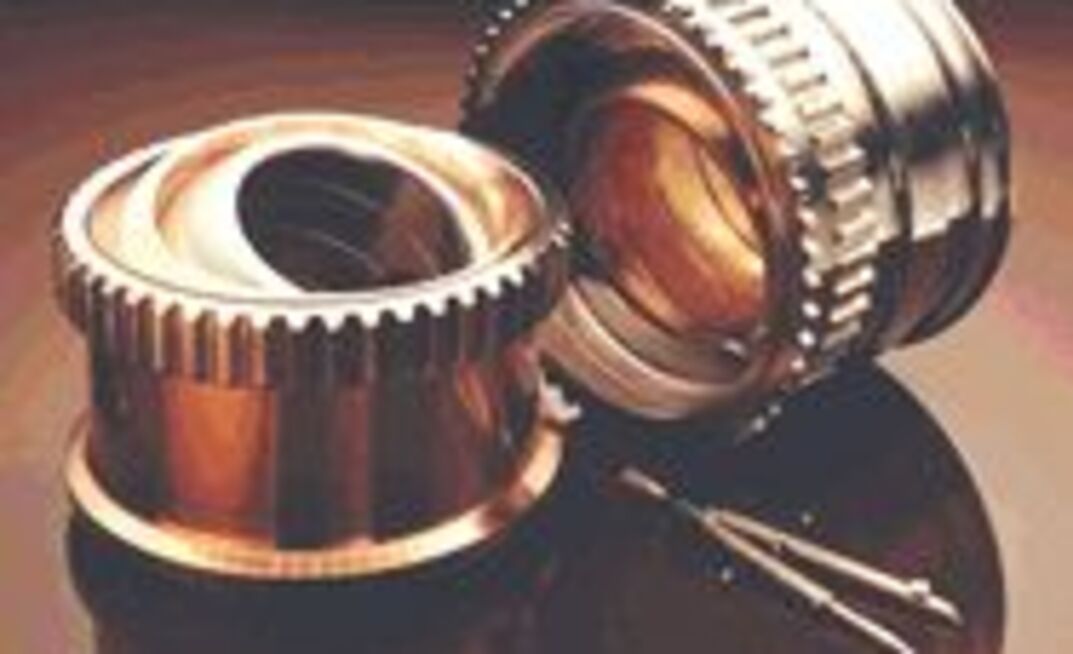Published in the May 2006 American Longwall Magazine
While ToughMet is not new to industry, said marketing director Dave Krus, its use in the harsh mining environment is.
The ToughMet chemistry has been known since the 1970s and was looked at for many uses, including undersea communication lines and other locations, where longevity and strength were imperative.
Now, because of Brush Wellman’s EquaCast casting process (which the company has patented), the company can produce castings up to 23 inches in diameter and in various shapes.
ToughMet itself has been produced in two different compositions, both containing copper, nickel and tin and are available in wrought and continuous cast form. For underground mining, the potential uses are many because of the material’s advantages in the environment.
“It’s very hard and it resists dirt and dust particles that chew up traditional bronze,” Krus said. “It supports the same load as the steel but it won’t stick to steel, and it delivers a low coefficient of friction, low wear and superior anti-galling performance – even completely dry.”
Brush does not recommend operating rotating machinery without lubrication but mines can still feel confident even if regular maintenance of the bushings is not possible. “People have [run them dry] and it can be done. If you forget to grease them, you don’t have a disaster. If you forget to grease the steel-on-steel joint, chances are it stops moving,” he said.
Krus said there are several uses for ToughMet underground. “We have made rock drill bushings and planetary gear pins for underground vehicles”, including the thrust washers and cutting drill bearings of continuous miners, he said. In fact, the company has teamed with Joy Mining Machinery to replace each unit’s lubricated steel bushings with ToughMet bushings.
Since 2002, according to Brush Wellman, there have been no equipment seizures or failures on any of its equipment using ToughMet, nor have any units’ bushings suffered premature wear. Krus sees this as a move towards a maintenance-free future for the part.
“It may be possible for ToughMet to be used instead of steel for large numbers of bushings, thereby reducing the size and complexity of the bearing lubrication system or, ultimately, eliminating it altogether.”
It is that long-term value, Krus adds, that he hopes will bring the rest of the industry over to using the ToughMet technology for mining equipments’ bushings. This will take a large chunk out of operations’ maintenance downtimes and extend the life of the bearing system over traditional material.
Corrosion, abrasion, dust and dirt collection that cause seizures and wear are virtually eliminated by the ToughMet technology, said Krus. This allows the focus to be taken off maintenance and put back on production. The savings in extra uptime for an operation results in the bushings paying for themselves pretty quickly.

























